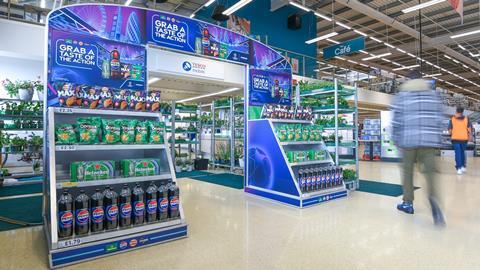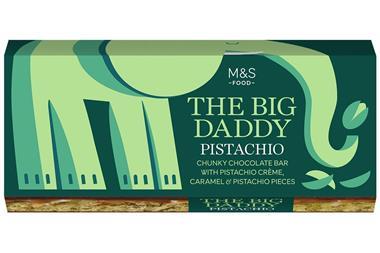Retail media is flying. But with the scale and breadth the medium offers, what does good look like? Here, Tesco Media and Insight Platform illustrates best practice and how to work across the funnel to achieve optimum success.
The UK retail media industry is on the verge of a milestone—and a major one at that.
In 2026, according to data from the IAB, spending on retail media will top £5 billion for the first time [IAB]. That’s an impressive enough figure on its own, but bear in mind these three things:
- that’s an almost twofold increase from the amount spent in 2023.
- that means that one in every eight pounds spent on media in the UK will be on retail media.
- this number only reflects investment in digital retail media so the overall number when store media is accounted for is far greater.
Whichever way you cut it, retail media is flying.
However, retail media’s success isn’t just defined by the amount of money that brands are pouring into it. It’s also about diversity, and the fact that a growing number of people from a variety of different marketing backgrounds are now beginning to engage with the medium.
Even in 2023, WARC was reporting on the rise of ‘retail media Centres of Excellence’ [WARC], and the bringing together of different marketing professionals in pursuit of better performance was something that Tesco Media noted in its Shape What Britain Buys 2024 trends report.
“What looks good to a performance marketer might look very different to what looks good to a brand marketer”
Defining best practice
This opening up of retail media is incredibly exciting to see – but it creates challenges, too. After all, with different disciplines come different skillsets, different priorities and different definitions of success. Combine that with the scale and breadth that retail media offers, and it can be difficult to know what best practice really looks like. What looks good to a performance marketer might look very different to what looks good to a brand marketer, for example.
So, what does best practice look like?
Tesco has been deeply involved in the retail media ecosystem for decades and is still at the forefront of innovation in the discipline today. That experience has helped to identify five key things that marketers need to bear in mind – from the way they view retail media to the way they measure it. Let’s take a look at each.
1. Retail media is a full-funnel activity, and treating it as such is crucial
As retail media continues to evolve, it now offers customers the best of both worlds – performance and brand-building opportunities that run across the entire funnel. Retail media is exceptional at driving sales, but it can be equally effective at the upper end of the funnel, too.
The key here is understanding which channels are most effective for which needs. At Tesco Media, there are a variety of channels available across on-site, in-store, and off-site. It’s a truly ‘sofa to store’ offering – one that gives brands the ability to reach customers at every stage of the shopping journey.
Tapping into channels that help build brands and drive awareness and consideration also helps improve performance at the lower end of the funnel.
Today, retail media is a full-funnel activity. Marketers can prime customers on one channel before prompting them to make a purchase on another. Best practice means thinking about the funnel in its entirety, not just the area you might be responsible for.
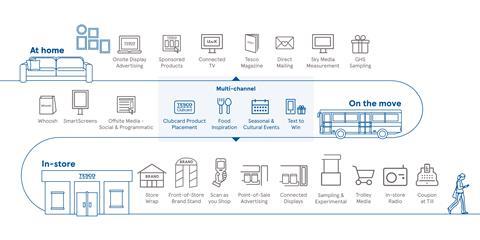
2. It’s important to maintain an omnichannel mindset, too
Retail media’s full-funnel capabilities aren’t the only thing that marketers need to bear in mind. It’s also important to remember that retail media is an omnichannel opportunity – one that makes it possible to activate a campaign across multiple touchpoints both offline and on.
That’s not just relevant in terms of reach, either. Research has shown that retail media campaigns are typically more effective when multiple touchpoints are used at once, boosting returns by as much as 25% [arc]. As a result, marketers need to think about how their campaigns could play out across multiple channels. What might a digital-first campaign look like in-store, for instance?
“One of the most powerful things about retail media is the combination of digital and physical inventory”
3. A data-driven approach to engagement is everything
Modern retail media is built on first-party data, something that’s incredibly valuable. It’s accurate, compliant, and offers the single source of truth that’s needed for advanced personalisation. There’s something else that first-party data offers, though, and that’s the ability to reach specific groups who can help marketers to achieve specific goals.
Tesco, for instance, focuses on audiences. It has ‘Behavioural Audiences’, which help brands reach people based on items they’ve bought before; ‘Predictive Audiences’, which can help to find those people most likely to buy a product in the future; and even specific subsets like ‘Category Buyers’ and ‘Cross Shoppers’, allowing advertisers to be even smarter about whom they engage with.
Taking those audiences and combining them with the omnichannel capabilities mentioned aboveprovides everything needed to reach the right people at the right time in the right place. And it all starts with a data-driven mindset.
4. To bring their campaigns to life, marketers need to embrace the creative canvas
One of the most powerful things about retail media is the combination of digital and physical inventory, something that gives marketers a huge creative canvas to play with. Tesco, today, uses everything from store wraps and front-of-store brand stands through to market-leading scan as you shop media, in-store radio and connected displays – a network of over 4,000 digital in-store screens. That mix creates an abundance of ways for marketers to bring their above-the-line campaigns into the store.
The same is true online, too, where event and brand zones give advertisers the chance to get creative. Brand expression is alive and well in retail media today – and by embracing that creative canvas, marketers have a much better chance of capturing their customers’ imaginations.
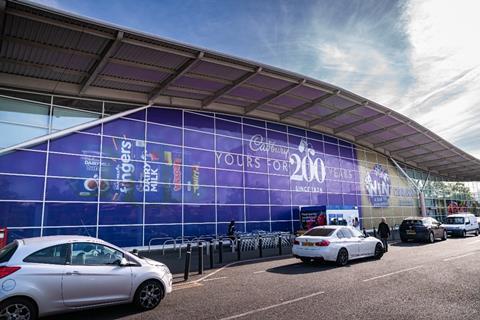
5. Success is about more than just ROAS
Return on advertising spend (ROAS) has long been the yardstick for retail media measurement, and it’s easy to understand why. Commercial performance is a good barometer, and businesses shouldn’t lose sight of that. But at the same time, ROAS in isolation only serves to reinforce the idea that retail media is only effective at the very foot of the funnel.
Awareness, consideration, loyalty and sales: with the right approach, retail media can supercharge a brand’s performance in every one of those areas – which means that it’s increasingly important for marketers to work with partners that can measure a campaign’s impact across the funnel, too.
Retail media is a rapidly evolving discipline. Not only does that make it hard for marketers to keep pace, but it can also make success a difficult thing to define.
It’s that thought that led to the creation of the Tesco Retail Media Certification.
Tesco Retail Media Certification
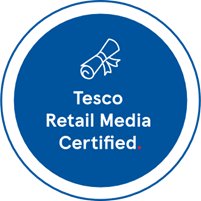
Whether just starting out in retail media, or coming equipped with years of experience, this free training course gives participants everything they need to power up their proficiency, hone their skills and understand the role Tesco can play on a media plan.
● Understand what is driving retail media’s stratospheric rise and how it has become a brand marketing essential.
● Discover the dynamics of the UK grocery market and how actionable insights from Clubcard fuel everything Tesco does.
● Learn how Tesco’s media solutions enhance the customer experience, close the marketing loop, and leverage the scale, precision and reach of Tesco.
Become Tesco Retail Media Certified and sign-up for free today, visit www.dunnhumby.com/tesco-retail-media-academy/








